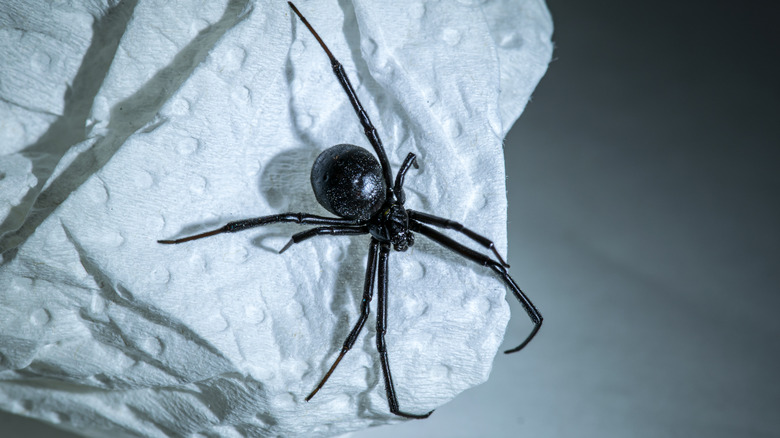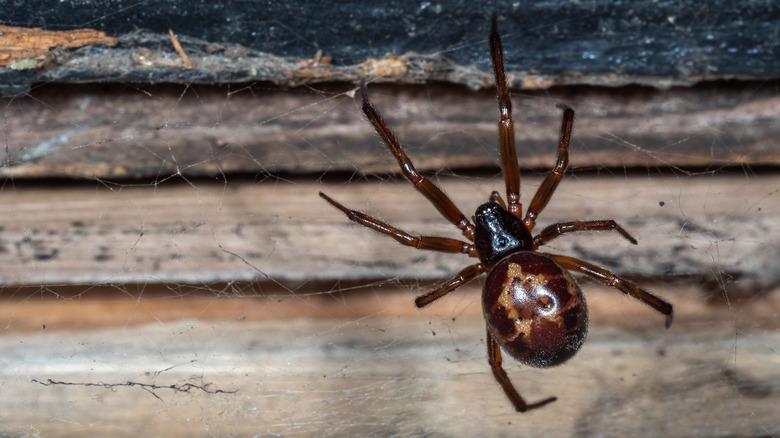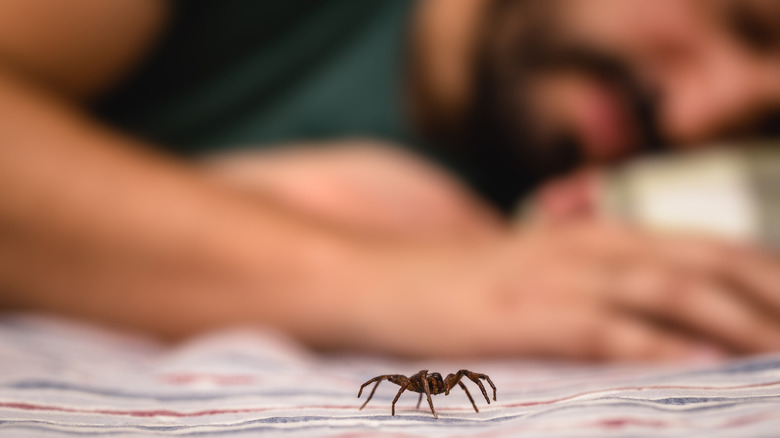Black Widow Vs Brown Widow: How To Identify Which Dangerous Spider Is Invading Your Home
The black and brown widows belong to the Theridiidae family, but they are far from identical. In fact, their appearances and habitats are quite distinct. They're artisans of the arachnid world, well known for their remarkable web-weaving capabilities. However, these spiders have more to them than just their craftsmanship, and each one carries its own unique "signature" that makes it distinguishable. It helps to properly understand which one you're dealing with to ensure you take appropriate action.
When it comes to looks, the brown widow has a body length of no more than 1 inch.It is a range of brown hues, and it's usually adorned with stripes on its stomach and sides. While it's true that you might come across some with orange-colored stripes, those aren't reliable for positive identification; these markings can fade as they mature. In contrast, if you're faced with a black widow, its shiny black appearance is usually the first clue — you'll also notice its formidable size of up to 2 inches. As for the females, you can distinguish them by the hourglass shape on the underside of their stomachs. This is practically their red flag, screaming, "Handle with care!" Beyond their appearances, you can also tell them apart by their behavioral traits and habitats which are equally crucial.
Differences in appearance, location, and habitat
When it comes to habitat preferences, brown widow spiders are highly adaptable, not just in your yard or house but also in industrial settings. They tend to favor empty containers like buckets and mailboxes, along with corners near entryways. However, they've been found in everything from shipping containers to outdoor furniture cushions, making them a versatile species that thrives in human-altered environments. They're the kind of spider that might surprise you by appearing in spaces you wouldn't typically associate with arachnid dwellings. They are also less picky than their black widow counterparts, which gravitate toward darker, more secluded spots like basements, woodpiles, and out-of-the-way corners.
Regarding behavior, this can be a game-changer in managing an unexpected encounter. For instance, the brown widow generally has a timid nature. It doesn't want a confrontation any more than you do, but don't take its timidity for granted. It may resort to biting if touched or cornered, although its venom is usually only mildly toxic. On the flip side, the black widow has a more complicated relationship with its surroundings. It usually keeps to itself, preferring isolated, dark places. However, it switches to a more aggressive mode if it senses specific threats, particularly toward its eggs. The bite of a black widow is not something to shrug off; its venom is highly potent and can result in severe pain, muscle cramps, and other more serious symptoms.
Behavioral traits and what to do if bitten
If you're looking to dodge a black widow infestation, a well-groomed yard is your first line of defense. Cut down tall grass and clear out any firewood or debris; these are spider magnets. Don't forget about other pests, like ants and flies — if they're around, black widows see your home as a dining hotspot. When it comes to your personal safety, gloves are a must-have when you're rummaging through areas where they are likely to be found. Keep an eye out for any webs; they're a clear sign you're not alone. One last thing — always shake out your shoes. It's a simple step that could save you from an unwelcome surprise.
If you suspect you've been bitten, it's time to take immediate action. With a brown widow bite, wash the affected area with soap and water, then apply a cold compress. While this may alleviate the discomfort, don't skip consulting a healthcare professional for further advice. The situation escalates with a black widow bite. Here, time is of the essence, and immediate medical attention becomes non-negotiable. Treatment often involves antivenom and medication for pain management. In some cases, muscle relaxants are also prescribed to counteract the symptoms, like cramps, which may accompany the bite.


